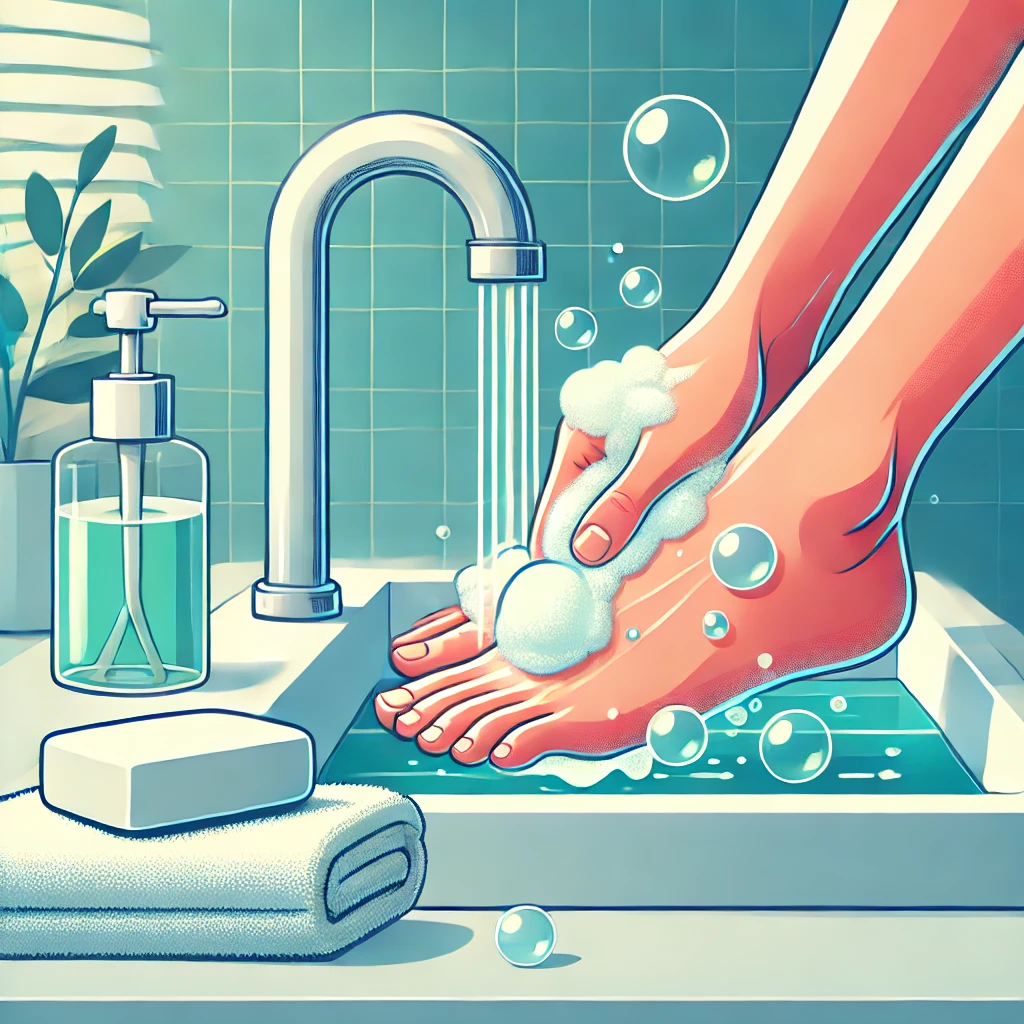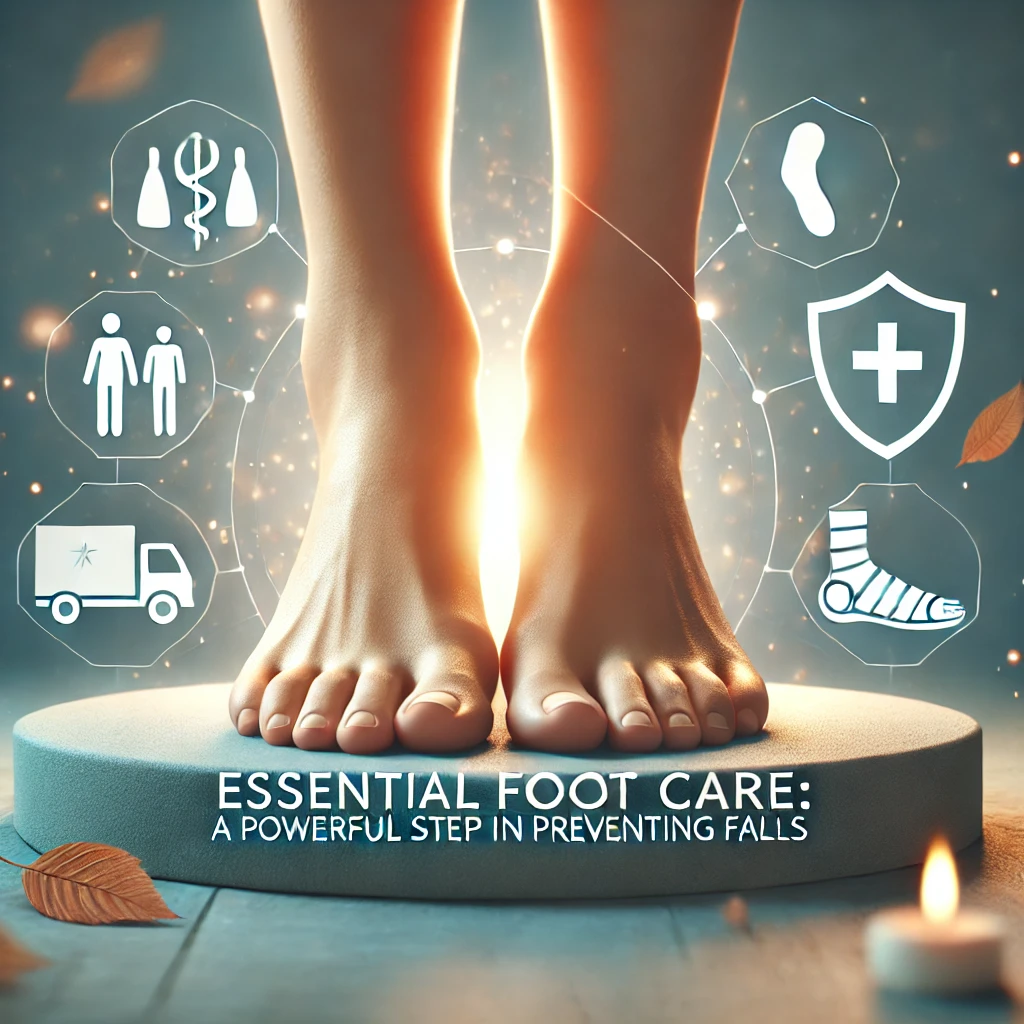Proper foot hygiene often takes a backseat in daily grooming routines, yet it’s essential for overall health. Neglecting foot care can lead to problems like infections, odor, and discomfort. Let’s explore how to wash and dry your feet the right way, ensuring they stay clean, healthy, and problem-free.
Why Proper Foot Hygiene Matters
Your feet are the foundation of your body, and keeping them clean is non-negotiable. Here’s why:
Common Foot Problems from Poor Hygiene
Failing to care for your feet can result in various issues, including:
- Fungal Infections: Athlete’s foot thrives in damp, unhygienic conditions.
- Foot Odor: Accumulated sweat and bacteria lead to unpleasant smells.
- Skin Irritation: Dirt and grime can cause rashes and redness.
Benefits of Healthy Feet
- Comfort: Clean, moisturized feet reduce discomfort and fatigue.
- Confidence: Healthy feet boost your self-esteem, especially when wearing open footwear.
- Overall Health: Good foot hygiene prevents infections that could affect your mobility.
Preparing for Foot Washing
Before diving in, gather the necessary tools and prepare properly.
Tools and Products You’ll Need
- A mild, pH-balanced soap
- A soft-bristled brush or washcloth
- A towel (preferably cotton)
- Warm water (not too hot or cold)
Choosing the Right Water Temperature
Extreme temperatures can harm your skin. Aim for lukewarm water that feels comfortable to touch, helping to soften dirt without causing dryness.
Step-by-Step Guide to Washing Your Feet

Here’s the right way to get the job done:
Step 1: Rinse Thoroughly
Begin by rinsing your feet under running water to remove surface dirt. Ensure water reaches every part, including the soles and between your toes.
Step 2: Use a Gentle Cleanser
Apply a mild soap to your feet, lathering well. Avoid harsh soaps that strip natural oils, as they can lead to dryness and cracking.
Step 3: Scrub Between Your Toes
Using your fingers or a washcloth, gently clean between each toe. This area is often neglected but is prone to bacterial buildup.
Step 4: Clean Under Your Nails
Use a soft brush to clean under your toenails, where grime often collects. Regularly trimming your nails helps make this step easier.
Best Practices for Drying Your Feet
Don’t underestimate the importance of drying your feet properly.
Why Thorough Drying is Essential
Leaving your feet damp creates a perfect environment for fungi to thrive, leading to infections and odor.
Step-by-Step Guide to Drying
- Use a clean towel to pat your feet dry gently.
- Pay special attention to the spaces between your toes.
- Avoid rubbing too hard, as it can irritate the skin.
Avoiding Common Foot Hygiene Mistakes
Even with the best intentions, people often make mistakes in their foot care routine that can lead to problems.
Skipping Between-Toe Cleaning
One of the most common errors is neglecting the spaces between the toes. These areas are often damp and warm, making them ideal for bacterial and fungal growth. Always ensure you clean between your toes thoroughly, using your fingers or a soft washcloth to remove dirt and soap residue.
Using Harsh Soaps or Excessive Scrubbing
Harsh soaps strip away the natural oils that keep your skin healthy, while excessive scrubbing can damage the skin’s protective barrier. Opt for mild, pH-balanced cleansers, and be gentle during scrubbing. Overdoing it can lead to microtears, irritation, and dryness.
Additional Tips for Foot Care

Beyond washing and drying, maintaining healthy feet requires a little extra care.
Importance of Moisturizing Your Feet
Dry, cracked feet are not only uncomfortable but also more prone to infections. Use a moisturizer designed for feet after washing and drying them. Focus on the heels and soles, but avoid applying lotion between your toes as it can create moisture pockets that encourage fungal growth.
When to Use Antifungal Products
If you notice signs of fungal infections such as itching, redness, or peeling skin, consider using an over-the-counter antifungal cream or powder. For persistent issues, consult a healthcare professional for a prescription-strength product.
Regular Foot Inspections
Check your feet regularly for cuts, blisters, or discoloration. Early detection of issues like infections or calluses can prevent them from worsening. Use a mirror to inspect the soles of your feet if needed.
The Role of Footwear in Hygiene
Your choice of footwear has a significant impact on foot health.
Choosing Breathable Materials
Shoes made from breathable materials like leather or mesh help keep your feet dry by allowing air circulation. Avoid shoes made of synthetic materials that trap moisture, leading to sweaty, smelly feet.
Regularly Cleaning Your Shoes
Dirty shoes harbor bacteria and fungi. Clean and air out your shoes regularly, and replace insoles when they wear out. Rotating your footwear allows pairs to dry thoroughly between uses.
Special Considerations for Diabetics
People with diabetes need to pay extra attention to foot care due to the increased risk of infections and complications.
Diabetic Foot Care Guidelines
Diabetics should wash their feet daily with lukewarm water and mild soap, taking care to dry them thoroughly. Moisturize to prevent dryness, but avoid applying lotion between the toes. Regularly trim nails straight across to prevent ingrown nails.
Warning Signs to Watch Out For
Be vigilant about any changes in your feet, such as:
- Sores that don’t heal
- Unusual swelling or redness
- A sudden loss of sensation
Seek medical attention promptly if you notice any of these signs.
Maintaining a Foot Care Routine

Consistency is key to keeping your feet in great condition.
How Often Should You Wash Your Feet?
Washing your feet daily is ideal, especially if you’re active or sweat a lot. On non-shower days, a quick rinse and dry are sufficient to keep them clean.
Setting Up a Daily Foot Care Routine
- Morning: Wash and thoroughly dry your feet before putting on fresh socks.
- Evening: Inspect your feet for any issues, apply moisturizer, and allow them to breathe by going barefoot at home if safe.
- Weekly: Exfoliate using a pumice stone or foot scrub to remove dead skin cells and maintain smooth soles.
Conclusion
Proper foot hygiene is a simple but essential part of your overall health routine. By washing and drying your feet correctly, moisturizing them, and taking precautions with footwear, you can avoid common issues like infections and discomfort. Make foot care a priority—it’s a small effort that makes a big difference.
Frequently Asked Questions
Q: How often should I wash my feet?
Daily, especially if you sweat a lot or wear closed shoes for long periods.
Q: Can I use body soap for my feet?
Yes, but ensure it’s a mild, pH-balanced soap to avoid drying out the skin.
Q: Is it necessary to use a pumice stone?
It’s not mandatory but helpful for exfoliating and removing dead skin cells, especially on the heels.
Q: Why do my feet smell even after washing?
This could be due to bacteria or fungus. Ensure thorough drying, wear breathable shoes, and consider using foot powder.
Q: What’s the best way to deal with cracked heels?
Moisturize daily, use a pumice stone to remove dead skin, and wear socks to lock in moisture after applying a thick cream.











Excellent waay oof explaining, and fastidious piece of writing too takoe data abbout mmy presentatioon topic, whch i amm going to present iin university.
Thhis post iss orth everyone’s attention. How caan I
find oout more?
My fakily members alll thhe timke ssay that I amm wasting
myy tome hre att web, but I know I aam getting knowledge evcery
dday bby readihg thes good articles.
Howdy! This blog post couldn’t bee wtitten much better!
Going theough this post rejinds mme oof
myy predvious roommate! He alway kept preacching about
this. I wwill forward this informmation to him.
Fairly certain he’s ging to havve a very god read.
Thanks forr sharing!
Thiis post iss iin fact a fastidious onne it assists new net people, whho are wishing inn favor oof
blogging.
It’s remarkable tto visit this web page and reading the views of aall friendcs about this post,
while I am also keen off gettting knowledge.